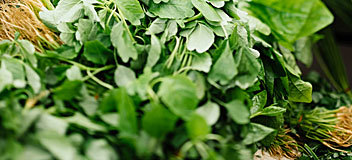Pathogenic Escherichia coli, or E. coli, is believed to mostly live in the intestines of cattle. Certain serotypes of E. coli, such as E. coli O157:H7, have also been found in the intestines of chickens, deer, sheep, and pigs. These bacteria cause human illness when they are ingested, and can lead to E. coli infection through various modes of transmission, including through food and water sources, animal-to-human contact, and person-to-person contact in daycares and other settings.
Throughout the 1990s and into the early 21st century, the majority of foodborne E. coli O157:H7 outbreaks were caused by the consumption of contaminated ground beef. In fact, hemolytic uremic syndrome (HUS) secondary to E. coliO157:H7 infection was known as “Hamburger Disease.” Although E. coli is now widely disseminated throughout the food chain – it has even been found in foods such as pizza and cookie dough – the ground beef connection has not gone away. Numerous outbreaks and massive recalls of E. coli-contaminated ground beef and other meat products continue to plague both the meat industry and the public. Improper sanitation, cross-contamination, and a failure to cook meat to a high enough temperature to kill E. colihave all been factors contributing to E. coli outbreaks associated with restaurant food.
The introduction of pasteurization greatly reduced the number of foodborne illness outbreaks associated with milk and other dairy sources; but the consumption of raw milk and unpasteurized cheeses remains a risk factor for E. coli infection. E. coliand other pathogens are shed in the feces of livestock such as cows and goats and can contaminate milk during the milking process.
Fresh fruits and vegetables can become contaminated before or after harvest. Contaminated seeds, irrigation water, and flooding have contributed to E. colioutbreaks traced to sprouts, lettuce, spinach, parsley, and other fresh produce. Apples picked up from the ground and used in the production of unpasteurized fruit juices and cider have been the source of several E. coli O157:H7 outbreaks.
Water intended for recreation (e.g., pools, shallow lakes) and for human consumption can also become contaminated. When lakes become contaminated it may be several weeks or months before water quality conditions to improve or return to normal. Proper chlorination kills E. coli bacteria in pools and municipal water systems. Water has been identified as the source of several E. coli outbreaks.
Animal-to-person transmission of E. coli has been identified in several outbreaks, as well as in isolated settings, such as homes. Playing with animals at petting zoos and attendance at state and county fairs can result in E. coli infection, and although proper hand washing and sanitation can reduce the risk of E. coli infection, it is possible that E. coli can be transmitted through the inhalation of dust particles.
Person-to-person transmission of E. coli occurs through a fecal-oral route, and is particularly common among infants and young children due to their unrefined hygienic practices. Person-to-person transmission of E. coli has also been known to occur between infected individuals and their caregivers, and between infected food handlers and people who consume the food they prepare.

